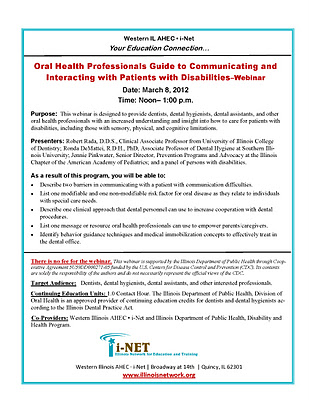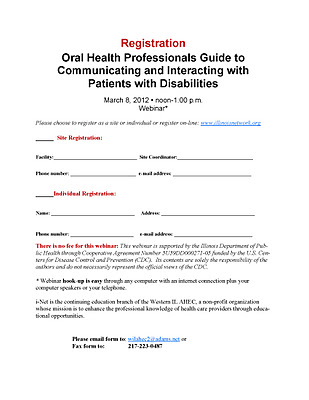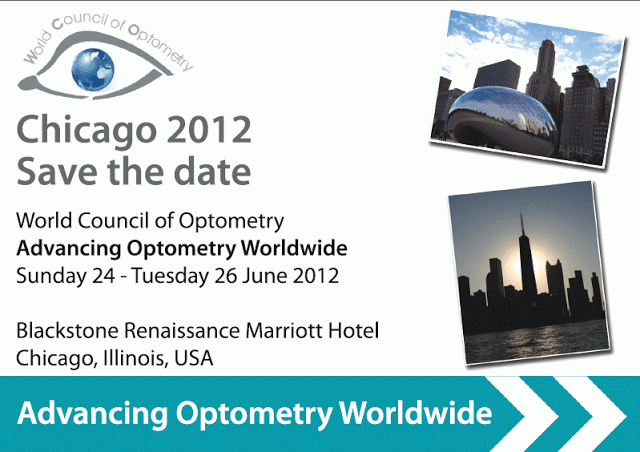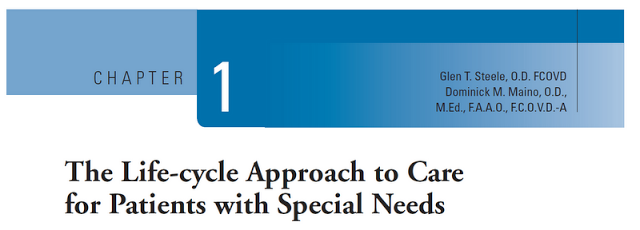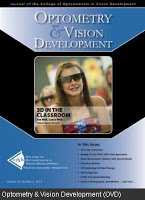Sensory disorders are common in those with traumatic brain injury
(TBI), including anomalies of vision, audition, and olfaction [1-14].
In terms of vision anomalies, one symptom evident in those with TBI is
photosensitivity, or photophobia, which presents as an elevated
sensitivity to light in the absence of ocular inflammation or infection
[7-14]. Photosensitivity in those with TBI has been reported in
between 20-40% in non-selected (i.e., not necessarily
visually-symptomatic persons with TBI) samples [7] and up to nearly 50%
in selected (i.e., visually-symptomatic persons with TBI) [8]. The
type of photosensitivity may be: 1) generalized to all types of
lighting, or 2) selective to fluorescent lighting.
This article serves to provide a brief overview of presenting
symptoms and possible underlying neurology, as well as existing
evaluative and treatment options.....
Comment: To read the whole article just click here. Enjoy! BTW if you are going to attend the International Brain Injury Association meeting in Edinburgh, Scotland this March, please let me know. I am presenting a poster at this meeting and would love to meet up with you to share a good single malt Scotch! DM
MainosMemos contains the latest research and information about eye and vision care of children, developmental disabilities, Traumatic/Acquired Brain Injury and other topics of interest to me (and hopefully you!).
Saturday, January 28, 2012
Friday, January 27, 2012
Optometry experts prove the effectiveness of orthokeratology in myopic control
Optometry experts prove the effectiveness of orthokeratology in myopic control
....Myopia ... is the most prevalent eye problem in Hong Kong population and especially for school children. Local Chinese students have a higher prevalence of myopia regardless of whether they attend in local or international schools when compared with other ethnic groups. Myopia will bring inconvenience in everyday life and .. is associated with retinal degeneration, peripheral retinal breaks and glaucoma which may lead to permanent vision loss and blindness.....
Orthokeratology is a non-surgical means of vision correction which must be administered by ... optometrists. Myopia is a refractive defect of the eye in which collimated light produces image focus in front of the retina. T...Patients who wish to receive ortholeratology must have a thorough eye examination to see if he or she is suitable for the treatment. Optometrist will dispense a pair of specially designed rigid contact lens made from high oxygen permeable material for wearing during sleep time. The lens will modify the corneal shape as well as to correct the focus of the eye in order to correct the wearer's vision. If successful, wearer can have clear vision without using any vision aids for the rest of the day.....Development and distribution of refractive error in children with Down's syndrome.
Development and distribution of refractive error in children with Down's syndrome
.....Children were hypermetropic, .... and the presence of significant astigmatism... was assessed with age. ..... Prevalence of significant oblique astigmatism increased with age and was highly prevalent (45%) in teenage years.....The results provide further evidence of the failure in the emmetropisation process in children with DS. ... The children show a specific development of oblique astigmatism that may be suggestive of a mechanical induction through eyelids.....
Walk This Way: Approaching Bodies Can Influence the Processing of Faces
Walk This Way: Approaching Bodies Can Influence the Processing of Faces
Thursday, January 26, 2012
For Kids with Near-Vision Disorder, Treatment Reduces Problems at School
For Kids with Near-Vision Disorder, Treatment Reduces Problems at School
....For children with convergence insufficiency (CI)—who have difficulty focusing on objects close up—effective treatments can help to reduce problems at school, reports a study in the January issue of Optometry and Vision Science, official journal of the American Academy of Optometry. The journal is published by Lippincott Williams & Wilkins, a part of Wolters Kluwer Health.
"A successful or improved outcome after CI treatment was associated with a reduction in the frequency of adverse academic behaviors and parental concern associated with reading and school work," concludes the new research, led by Eric Borsting, OD, of Southern California College of Optometry, Fullerton......Wednesday, January 25, 2012
How The Brain Routes Traffic For Maximum Alertness
How The Brain Routes Traffic For Maximum Alertness
......A new UC Davis study shows how the brain reconfigures its connections to minimize distractions and take best advantage of our knowledge of situations.....
Tuesday, January 24, 2012
How The Brain Computes 3-Dimensional Structure
How The Brain Computes 3-Dimensional Structure
....The incredible ability of our brain to create a three-dimensional (3D) representation from an object's two-dimensional projection on the retina is something that we may take for granted, but the process is not well understood and is likely to be highly complex. Now, new research published by Cell Press in the January 12 issue of the journal Neuron provides the first direct evidence that specific brain areas underlie perception of different 3D structures and sheds light the way that the primate brain reconstructs real-world objects......
Monday, January 23, 2012
Play Swish: A Game to Improve Vision Perception
Swish looks pretty cool!
Comments: I have no financial interest in this game. DM
Comments: I have no financial interest in this game. DM
Discipline Researchers Who Withhold Research Results
Discipline Researchers Who Withhold Research Results
Drug research, even from clinical trials sponsored by the federal government, routinely is suppressed, harming patients and increasing healthcare costs, according to a series of reports published by BMJ."The current situation is a disservice to research participants, patients, health systems, and the whole endeavor of clinical medicine," according to an editorial published with the reports.....
Comments: This is inexcusable! Any and all researchers, institutions, companies or organizations who knowingly do this should be barred from access to research dollars for a very long time (not to mention face the potential for jail time if harm comes to patients). If we cannot trust the honesty of our researchers, we, as health care providers, may inadvertently harm our patients. I find this unacceptable, unethical and morally appalling. Why would researchers do this? (For possible reasons, check out Mistakes Were Made (but not by me). DM
Sunday, January 22, 2012
The Ten Habits of a Sharp Brain
The Ten Habits of a Sharp Brain..
- Learn what is the “It” in “Use It or Lose It”.
- Take care of your nutrition.
- .....Things that exercise your body can also help sharpen your brain: physical exercise enhances neurogenesis.
- Practice positive, future-oriented thoughts until they become your default mindset... Comments: Read more by clicking on the link above. DM
Eye and Vision Assessment of Children with Special Needs in an Interdisciplinary School Setting
...The most recent issue of Optometry & Vision Development (OVD),
the official journal of the College of Optometrists in Vision Development has research and other articles that may surprise you.....
....An article by Dr. Marie Bodack, Eye and Vision Assessment of Children with Special Needs in an Interdisciplinary School Setting, found that during a three year period of the 273 children with special needs who received eye examinations (about 1/3 of the children had been diagnosed with autism), 3.7% had amblyopia (lazy eye), 6% presented with an eye turn, and 11% had refractive errors (nearsightedness, farsightedness, astigmatism) requiring correction. Approximately 2.5% were also referred for additional care because of ocular health problems. This paper supports the need for all with special needs to have comprehensive eye care by an optometrist.....
Comments: Dr. Bodack is a member of a team of eye care professionals at the Cincinnati Childrens' Hospital who has been serving the health care needs of children for some time. She is a Fellow of the American Academy of Optometry, a Fellow of the College of Optometrists in Vision Development.....and a colleague of whom I am very proud!
Providing eye and vision care for those with special needs has been near and dear to my heart for decades. As the editor of the only book written by an optometrist for the optometrist on this topic dating back to 1995 (reprinted by OEPF in 2001) and now as the co-editor of a totally new text on this topic to be published by Lippincott in May 2012, I strongly encourage all research that demonstrates the incredible need for eye care for those with disability. We must teach all that eye care must be placed high on the list of areas to be assessed for those with special needs. DM
....An article by Dr. Marie Bodack, Eye and Vision Assessment of Children with Special Needs in an Interdisciplinary School Setting, found that during a three year period of the 273 children with special needs who received eye examinations (about 1/3 of the children had been diagnosed with autism), 3.7% had amblyopia (lazy eye), 6% presented with an eye turn, and 11% had refractive errors (nearsightedness, farsightedness, astigmatism) requiring correction. Approximately 2.5% were also referred for additional care because of ocular health problems. This paper supports the need for all with special needs to have comprehensive eye care by an optometrist.....
Comments: Dr. Bodack is a member of a team of eye care professionals at the Cincinnati Childrens' Hospital who has been serving the health care needs of children for some time. She is a Fellow of the American Academy of Optometry, a Fellow of the College of Optometrists in Vision Development.....and a colleague of whom I am very proud!
Providing eye and vision care for those with special needs has been near and dear to my heart for decades. As the editor of the only book written by an optometrist for the optometrist on this topic dating back to 1995 (reprinted by OEPF in 2001) and now as the co-editor of a totally new text on this topic to be published by Lippincott in May 2012, I strongly encourage all research that demonstrates the incredible need for eye care for those with disability. We must teach all that eye care must be placed high on the list of areas to be assessed for those with special needs. DM
Subscribe to:
Posts (Atom)


